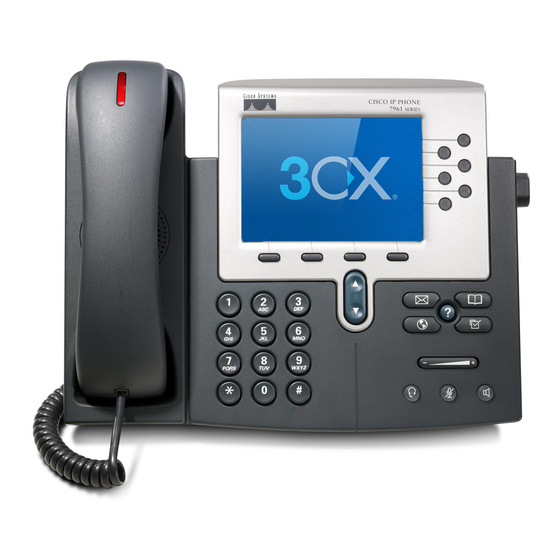Troubleshooting and Maintenance
Quality Report Tool
The Quality Report Tool (QRT) is a voice quality and general problem-reporting tool for the Cisco Unified IP
Phone. The QRT feature is installed as part of the Cisco Unified Communications Manager installation.
You can configure Cisco Unified IP Phones with QRT. When you do so, users can report problems with phone
calls pressing QRT. This softkey is available only when the Cisco Unified IP Phone is in the Connected,
Connected Conference, Connected Transfer, or OnHook states.
When a user presses QRT, a list of problem categories appears. The user selects the appropriate problem
category, and this feedback is logged in an XML file. Actual information logged depends on the user selection,
and if the destination device is a Cisco Unified IP Phone.
For more information about using QRT, see the Cisco Unified Serviceability Administration Guide.
Voice Quality Monitoring
To measure the voice quality of calls that are sent and received within the network, Cisco Unified IP Phones
use the following statistical metrics that are based on concealment events. The DSP plays concealment frames
to mask frame loss in the voice packet stream.
• Concealment Ratio metrics: Shows the ratio of concealment frames over total speech frames. The phone
• Concealed Second metrics: Shows the number of seconds in which the DSP plays concealment frames
• MOS-LQK metrics: Uses a numeric score to estimate the relative voice listening quality. The Cisco
Note
Concealment ratio and concealment seconds are primary measurements based on frame loss while MOS LQK
scores project a "human-weighted" version of the same information on a scale from 5 (excellent) to 1 (bad)
for measuring listening quality.
Listening quality scores (MOS LQK) relate to the clarity or sound of the received voice signal. Conversational
quality scores (MOS CQ, such as G.107) include impairment factors, such as delay, that degrade the natural
flow of conversation.
You can access voice quality metrics from the Cisco Unified IP Phone by using the Call Statistics screen or
remotely by using Streaming Statistics.
Related Topics
calculates an interval conceal ratio every 3 seconds.
due to lost frames. A severely "concealed second" is a second in which the DSP plays more than five
percent concealment frames.
Unified IP Phone calculates the mean opinion score (MOS) for listening quality (LQK) based audible
concealment events due to frame loss in the preceding 8 seconds, and includes perceptual weighting
factors such as codec type and frame size.
The phone uses the Cisco proprietary algorithm, Cisco Voice Transmission Quality (CVTQ) index, to
produce MOS LQK scores. Depending on the MOS LQK version number, these scores might be compliant
with the International Telecommunications Union (ITU) standard P.564. This standard defines evaluation
methods and performance accuracy targets that predict listening quality scores based on observation of
actual network impairment.
Call Statistics Screen
Quality Report Tool
Troubleshooting and Maintenance
23

